Application of Multiple Detection Data in the Impact Analysis of Typhoon Lionrock
DOI: 10.23977/envcp.2022.010102 | Downloads: 24 | Views: 2758
Author(s)
Chenxiao Shi 1,2, Chunhua Wang 3, Jianhua Du 1,2
Affiliation(s)
1 Hainan Province Meteorological Information Center, Haikou, Hainan, 57020, China
2 Key Laboratory of South China Sea Meteorological Disaster Prevention and Mitigation, Haikou, Hainan, 570203, China
3 Qionghai City Meteorological Bureau, Qiongha, Hainan, 571400, China
Corresponding Author
Chunhua WangABSTRACT
This research analyzes the rainfall and wind process of Typhoon Lionrock by integrating conventional and unconventional detection data. The results indicate that: 1) Typhoon Lionrock was generated offshore, during which water vapor replenished and cold air moved continuously southward, bringing a large storm to Hainan Island and the southern and western regions of Guangdong; 2) The combination of vertical velocity of the wind profiler radar and PWV, TBB can accurately show the cloud and rain occurrence region and anticipate the development, occurrence, and termination of typhoon precipitation; it also correlates well with the intensity of precipitation. 3) The horizontal wind field of wind profiler radar and the MTCSWA wind field map can accurately reflect the movement process of typhoons, and areas with strong winds; 4) The analysis based on satellite cloud map and radar data revealed that the overall structure of Typhoon Lionrock is loose, which can be further analyzed in conjunction with other observation data.
KEYWORDS
Multiple Detection Data, Rainfall, Gale, Analysis, ApplicationCITE THIS PAPER
Chenxiao Shi, Chunhua Wang, Jianhua Du, Application of Multiple Detection Data in the Impact Analysis of Typhoon Lionrock. Environment and Climate Protection (2022) Vol. 1: 13-23. DOI: http://dx.doi.org/10.23977/envcp.2022.010102.
REFERENCES
[1] Lin Q. M., Chen Y. Z., Chen Y. Q., et al. Application of two kinds of unconventional detection data in weather forecast. Meteorological Science and Technology, 2012, 40 (3): 417-422.
[2] Tian W., Wu L.G., Liu Q. Y., et al. Evaluation of tropical cyclone surface wind analysis in East China Sea with NOAA/NESDIS multiplatform. Journal of Tropical Meteorology, 2016, 32 (1): 63-72.
[3] Yu X. J., Tang Y. L., Yu Z. X., et al. Characteristics of precipitable water vapor over the Tianshan Mountains based on GPS observations. Meteor Mon, 2019, 45 (12): 1691-1699 (in Chinese).
[4] Luo H. Y., Yang H. L., Lu Chao, et al. Comparative Analysis of Wind Speed Observation by Shenzhen Wind Profiler Radar and Meteorological Gradient Tower. Guangdong Meteorology, 2017, 39 (6): 72-76.
[5] Park S Y, Wan Q L, Ding W Y, et al. Impact of wind profiler data assimilation on wind field assessment over coastal areas. Asian Journal of Atmosphere Environ, 2010, 4 (3): 198-210.
[6] Liu S. Y., Zheng Y. G., Tao Z. Y. The analysis of the relationship between pulse of LLJ and heavy rain using wind profiler data. Journal of Tropical Meteorology, 2003, 19 (3): 285-290.
[7] Zhou X. Y. Structural characteristics of the low-level wind field of the landing typhoons "Swan" and "Jujue" revealed by the multi-point observation network of the wind profiler. Chinese Academy of Meteorological Sciences, 2011.
[8] Gou A. N., Wu C. H. Wang Y.J., et al. Meso and small-scale characteristics of heavy rain during Meiyu period in Hubei based on wind profiler radar. Journal of Arid Meteorology, 2022, 40 (1): 84-94, DOI: 10.1175/j.issn. 1006-7639 (2022)-01-0084.
[9] Pan C J, Reddy K K, Lai H C, et al. Wind profiler observations on orographic effects of typhoon wind structure modification over Taiwan (120.38°E, 22.6°N). Annales Geophysicae, 2010, 28 (1): 141-147.
[10] Guo J., Li G. P., Huang W. S., et al. Characteristics of GPS-retrieved precipitation water vapor in different precipitation types. Advances in Water Science, 2009, 20 (6): 763-768.
[11] Fu Q. Q., Li J., Zhang Y. Preliminary application of GPS/MET data on the severe convective weather process in Jiangxi. Meteorology and Disaster Reduction Research, 2011, 34 (3): 36-40.
[12] Chen X. L. Study on the operation and application of the ground-based GPS in Hebei. Lanzhou University, 2007.
[13] Pan W. H., Yu Y. J., Luo Y. Y., et al. Analysis of Spatio-temporal distribution characteristics of atmospheric precipitable resources over Fujian based on ground-based GPS Data. Journal of Arid Meteorology, 2021, 39(4): 577-584, DOI: 10.11755/j.issn. 1006-7639(2021)-04-0577.
[14] Xu A. H., Ying D. M., Huang Z. H. Comparative Analysis on Doppler Weather Radar Products of two Kinds of Severe Convections in Jiangxi Province. Meteorology and Disaster Reduction Research, 2007, 30 (2): 23-27.
[15] Ying D. M., Xu A. H., Peng J. H., et al. Analysis of a Supercell from Doppler Weather Radar Product. Meteorology and Disaster Reduction Research, 2008, 31 (4): 13-17.
[16] Ren X. G., Xiao T. G., Tang Z. Y. Analysis on the Doppler radar characteristics of a tornado in Xuzhou on August 2018. Journal of the Meteorological Sciences, 2021, 41 (2): 221-227.
[17] Diao X. G., Meng X. G., Zhang L., et al. Analysis of microscale vortex signature and early warning capability of tornadoes in the circulations of Typhoon YAGI and RUMBIA. Journal of Marine Meteorology, 2019, 39 (3): 19-28. DOI: 10.19513/j.cnki.issn2096-3599.2019.03.003. (in Chinese)
[18] Chen Z. G., Li H. Y., Xiao L. S., et al. Contrastive analysis of two intense typhoon-tornado cases with synoptic and doppler weather radar data. Journal of the Meteorological Sciences, 2021, 41 (1): 99-107.
[19] H. F. S., Xiao J. J., Zheng J. X., et al. On the spatiotemporal distribution of short-range intense rain of Heyuan and analysis of its radar echo characteristics. Guangdong Meteorology, 2020, 42 (6): 35-43.
[20] Knaff J A, DeMaria M. 2010. NOAA/NESDIS multiplatform tropical cyclone surface wind analysis. Fort Collins, Colorado: NESDIS/STAR.
[21] Chen K. X., Chen G. H., Xiang C. Y., et al. Statistical characteristics of wind field structures of tropical cyclones over the Western North Pacific based on MTCSWA Data. Climatic and Environmental Research (in Chinese), 2020, 25 (6): 588-600. DOI: 10.3878/j.issn.1006-9585.2020.19122.
[22] Xiang C. Y., Wu L. G., Tian W., et al. Applications of MTCSWA data to the characteristics analysis of tropical cyclone structure. 2016, 42 (11): 1315-1324.
[23] Ying M, Zhang W, Yu H, et al. An overview of the China Meteorological administration tropical cyclone data base. Journal of Atmospheric and Oceanic Technology, 2014, 31 (2): 287-301.
[24] Yu H. X., Zhang X. C. Application of Brightness Temperature (TBB) in Tropical Cyclone Research. China Science and Technology Information, 2009 (23): 26-27.
[25] Zhang X. W., Luo Z. X. Analysis of the reasons and characteristics of typhoon "Phoenix" for a long time. China Science and Technology Information, 2009 (10): 38-42.
[26] Chen J., Xu B., Zheng J., et al. Application of unconventional observation data on the analysis of warm area rainstorm happened in Jiangxi. Meteorology and disaster reduction research, 2015, 38 (4): 20-29.
[27] Fei S., Yang L., Wang G. Q., et al. Research on data credibility of wind profiler radar product. Journal of the Meteorological Sciences, 2020, 40 (4): 527-533.
[28] Shi C. X., Dai L.Q., Cheng H. T., et al. Application of wind profiler data in analysis of the visit by Typhoon Dianmu. Guangdong Meteorology, 2019, 41 (5): 27-30.
| Downloads: | 666 |
|---|---|
| Visits: | 39021 |
Sponsors, Associates, and Links
-
International Journal of Geological Resources and Geological Engineering
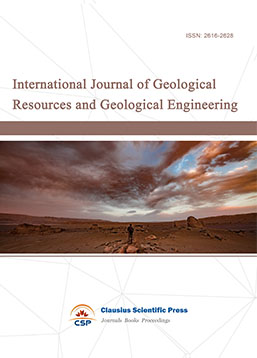
-
Big Geospatial Data and Data Science

-
Solid Earth and Space Physics

-
Journal of Cartography and Geographic Information Systems

-
Environment, Resource and Ecology Journal
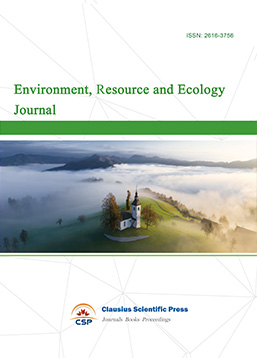
-
Offshore and Polar Engineering

-
Physical and Human Geography
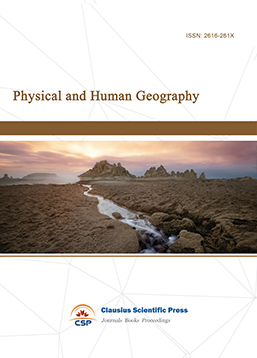
-
Journal of Atmospheric Physics and Atmospheric Environment
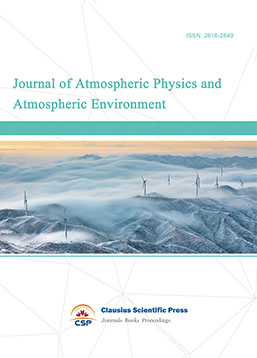
-
Trends in Meteorology

-
Journal of Coastal Engineering Research
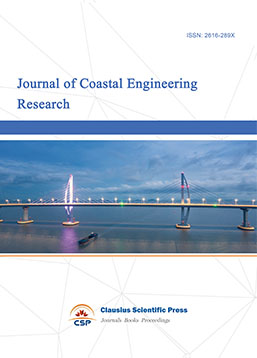
-
Focus on Plant Protection

-
Toxicology and Health of Environment

-
Geoscience and Remote Sensing
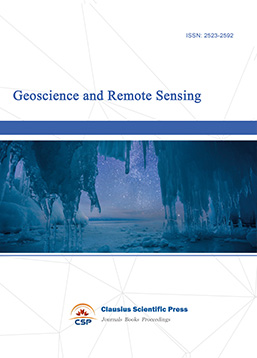
-
Advances in Physical Oceanography

-
Biology, Chemistry, and Geology in Marine
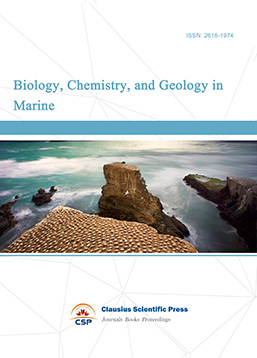
-
Water-Soil, Biological Environment and Energy

-
Geodesy and Geophysics

-
Journal of Structural and Quaternary Geology
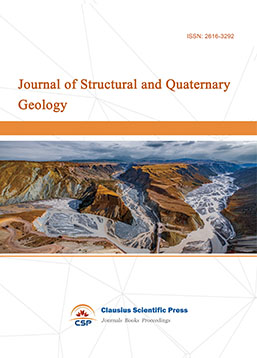
-
Journal of Sedimentary Geology

-
International Journal of Polar Social Research and Review


 Download as PDF
Download as PDF